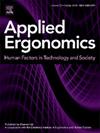探讨重症监护室患者病情严重程度与室内初级护理时间之间的关系
IF 3.4
2区 工程技术
Q2 ENGINEERING, INDUSTRIAL
引用次数: 0
摘要
本研究探讨重症监护病房(ICU)患者序贯器官衰竭评估(SOFA)与初级保健护理时间之间的关系。尽管ICU护士有许多影响患者预后的责任,但对于患者疾病的严重程度如何影响护士在医疗ICU内从事初级保健的时间和活动,我们知之甚少。数据收集时间定于2020年2月至4月,因新冠肺炎疫情于3月11日暂停。在恢复临床研究活动后,于2020年7月6日恢复。我们为时间运动研究收集数据。我们将人工观测数据与近场电磁测距(NFER)系统的实时定位数据相结合,分析初级保健中的时间结构。我们的目标是调查患者病情严重程度对重症护理时间分配的影响。总体而言,2月和7月在初级保健和同伴支持活动上花费的时间没有显著差异。然而,对于特定的初级保健任务,与2月份相比,ICU护士花在患者评估、患者护理和用药任务上的时间更少,7月份花在患者运输上的时间明显更多。在2月份的数据中,我们发现SOFA得分与用于初级保健的时间之间存在显著相关性,表明患者疾病严重程度与护理时间分配之间存在有意义的关联。然而,在7月份的数据中,SOFA评分与用于初级保健的时间之间没有相关性。这些发现提高了我们对护士在重症监护病房所面临的挑战的理解,强调了必要的调整以加强护理。本文章由计算机程序翻译,如有差异,请以英文原文为准。
Exploring the relationship between severity of patient illness and in room primary care nursing time in a medical intensive care unit
This study explores a connection between sequential organ failure assessment (SOFA) of patients in a medical intensive care unit (ICU) and primary care nursing time. Although ICU nurses have many responsibilities that impact patient outcomes, little is known about how the severity of a patient's illness influences the time and activities that nurses dedicate to primary care within a medical ICU. Data collection was set for February to April 2020, as suspended on March 11 due to COVID-19. It resumed on July 6, 2020, after clinical research activities were reinstated. We collected data for a time-motion study. We combined the manual observation data with the real-time location data of a Near Field Electromagnetic Ranging (NFER) system to analyze how time is structured in primary care. Our goal was to investigate the impact of a patient's illness severity on how time is allocated in intensive care nursing. Overall, there was no significant difference between February and July in terms of time spent on primary care and peer support activities. However, for specific primary-care tasks, ICU nurses spent less time on patient assessment, patient care, and medication tasks compared to February, significantly more time on patient transport in July. In the February data, we found a significant correlation between the SOFA score and the time devoted to primary care, indicating a meaningful association between patient illness severity and the allocation of nursing time. However, in the July data, no correlation was found between the SOFA score and the time spent on primary care. These findings improve our understanding of the challenges that nurses experience in medical ICU units, emphasizing the necessary adjustments to enhance nursing care.
求助全文
通过发布文献求助,成功后即可免费获取论文全文。
去求助
来源期刊

Applied Ergonomics
工程技术-工程:工业
CiteScore
7.50
自引率
9.40%
发文量
248
审稿时长
53 days
期刊介绍:
Applied Ergonomics is aimed at ergonomists and all those interested in applying ergonomics/human factors in the design, planning and management of technical and social systems at work or leisure. Readership is truly international with subscribers in over 50 countries. Professionals for whom Applied Ergonomics is of interest include: ergonomists, designers, industrial engineers, health and safety specialists, systems engineers, design engineers, organizational psychologists, occupational health specialists and human-computer interaction specialists.
 求助内容:
求助内容: 应助结果提醒方式:
应助结果提醒方式:


